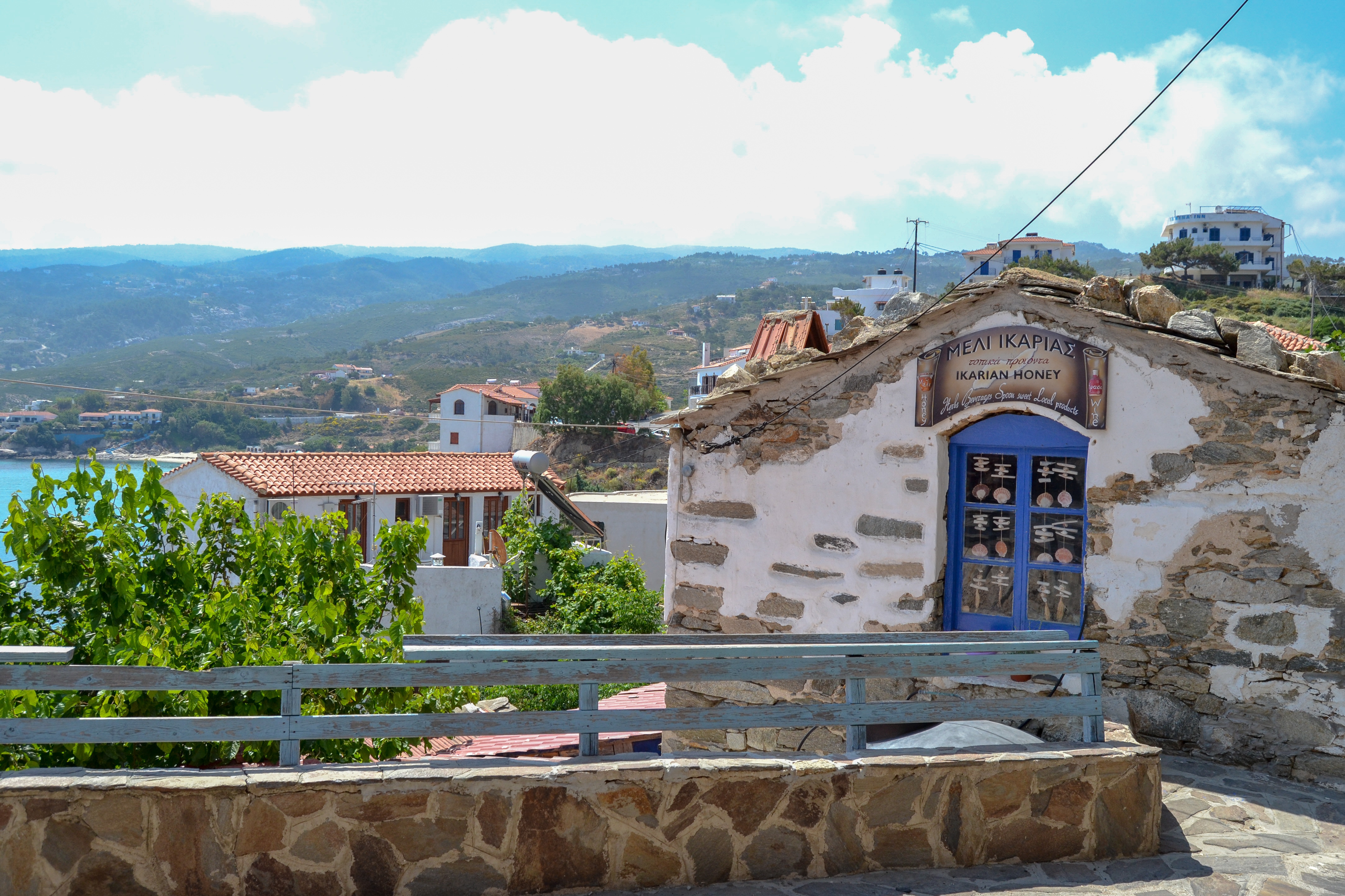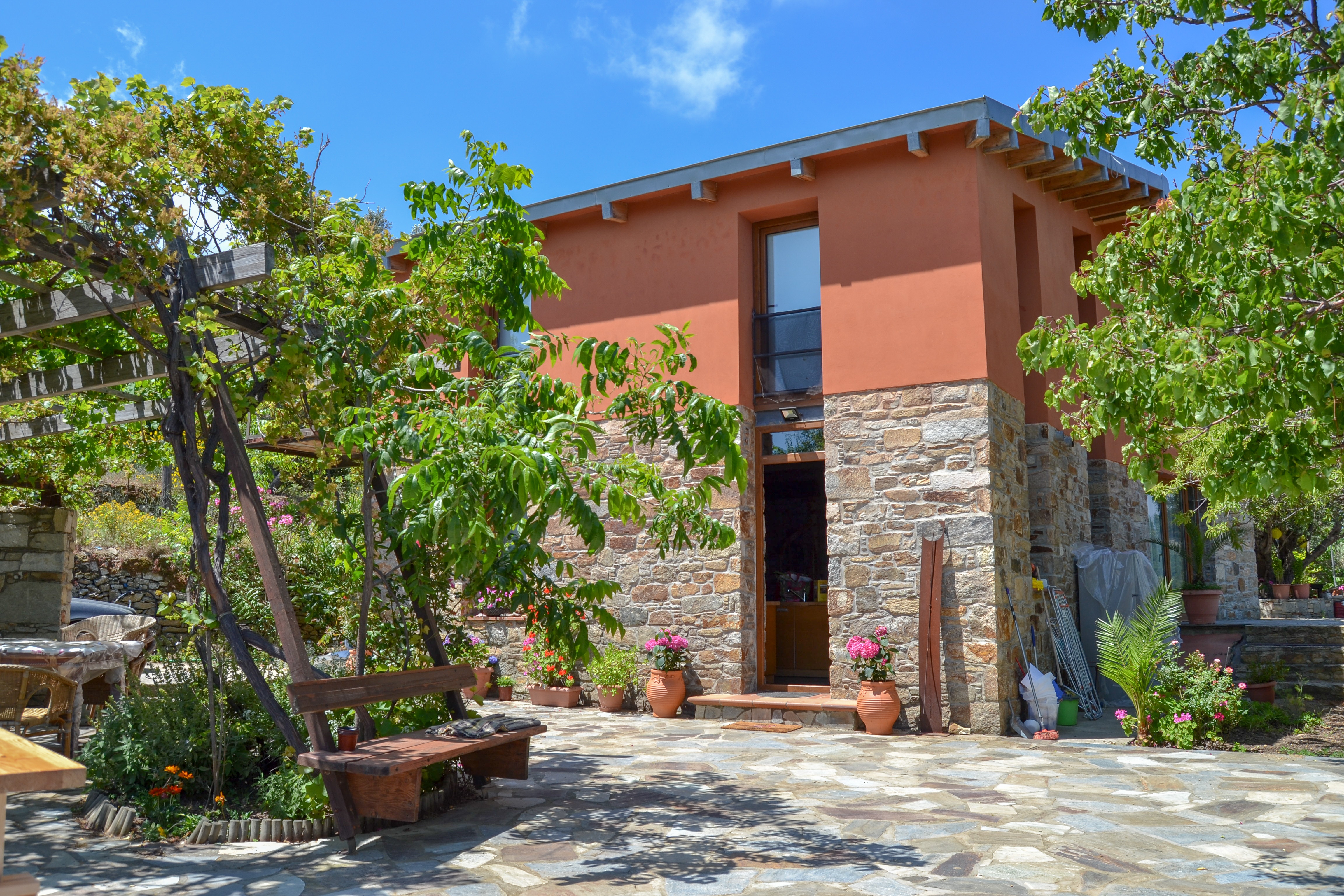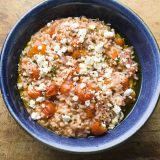A woman hunches in the shade along a winding road, fishing through what look like weeds growing next to her battered moped. A plastic crate strapped over the rear wheel is filled with reused grocery bags. I pass with barely a thought, afraid of arriving late for my appointment with Diane Kochilas, a woman synonymous with Greek cuisine in the United States.
I drive higher up and inland, and the crystalline Aegean Sea recedes into the distance as the rocky landscape changes to sun-dappled evergreen forest. The smell of pine competes with what could be honeysuckle, or maybe it’s the yellow-blooming Sparta bushes that paint nearly every hillside. I see another person crouched on the side of the road. More plastic bags. Clearly, they are searching for something, for many things.
Such is the way on Ikaria, the wing-shaped Greek island where three of Kochilas’ grandparents were born—and where the hunt for what grows wild lasts throughout the year. In the spring, residents forage for salad greens like boratzi and wild fennel. Weeds to many of us. In the fall, it’s dozens of varieties of mushroom. When I visit in early summer, they might be seeking wild asparagus and fresh oregano.
“I find that as an American growing up in a place where we have 24-7 availability of everything, people have lost all sense of what’s in season when,” Kochilas, who was raised in an Ikarian enclave of Queens, New York, says in her airy kitchen. “In Greece, there’s still a connection to the land, so people have this knowledge of what’s in season, but also a really beautiful sense of anticipation.”
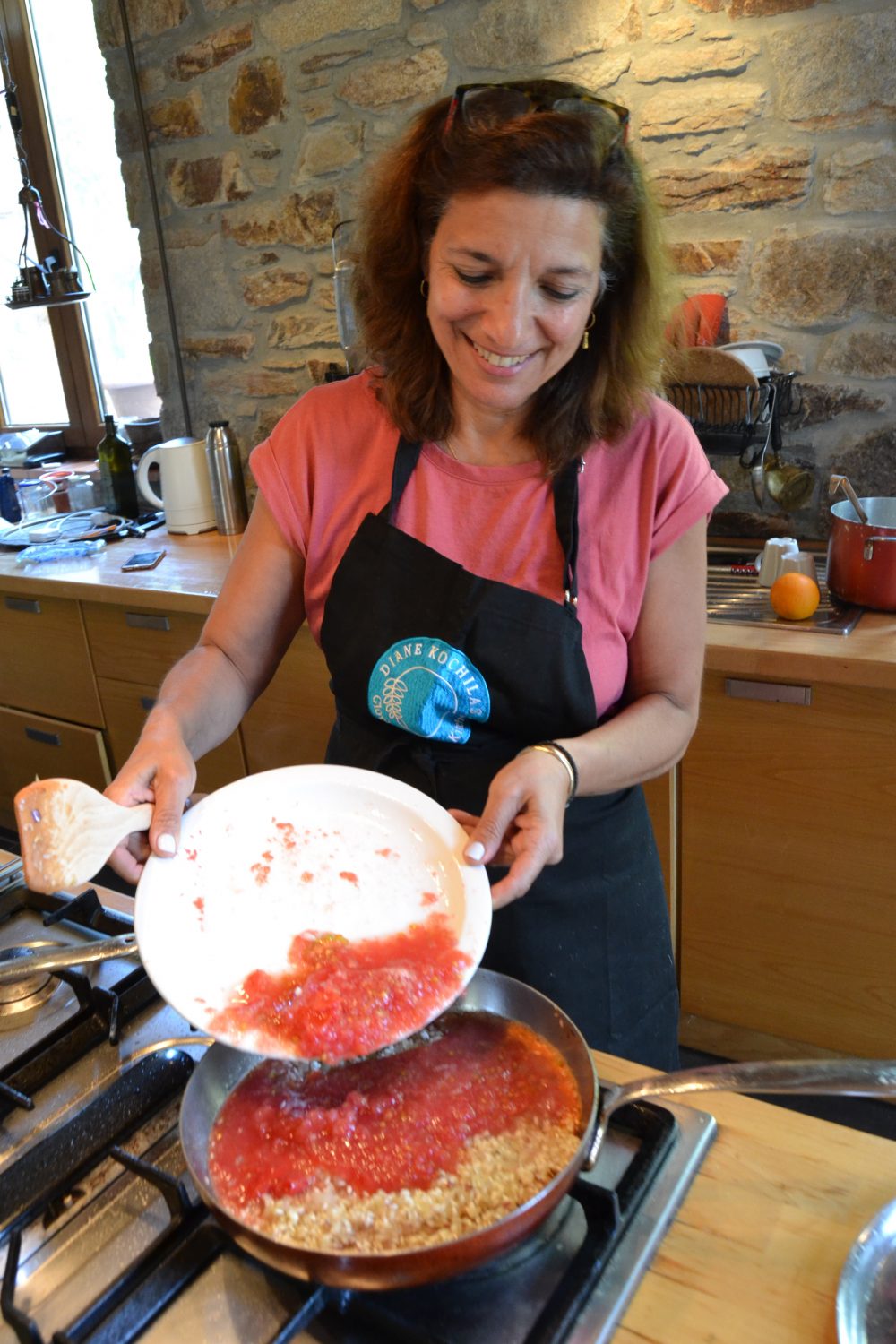
Chef Diane Kochilas demonstrates her laid-back approach to Greek cuisine from her Ikarian home overlooking the Aegean Sea.
The larger point, I soon learn, is less about knowing when and where to pick the right ingredients, and more about having the confidence to let those ingredients do most of the work to produce delicious dishes.
That Ikaria has preserved such traditions reflects an entrenched self-sufficiency borne of centuries of isolation, partly because the surrounding seas were notoriously treacherous. Even as late as the 1960s, political opponents were exiled here, which led to an independent streak and a communal reliance on the land that endures to this day. The island’s markets are surprisingly terrible, because whatever locals don’t grow in their own gardens, they probably get from a neighbor or find in the wild.
It also is a reflection of the laid-back, come-what-may lifestyle of Ikaria, a place where a combination of healthy eating, foraged herbal remedies and the absence of stress makes it one of the world’s rare Blue Zones, noted for its residents’ unusual longevity. The local joke is that Ikarians live so long that they forget to die. And that lackadaisical attitude translates to Kochilas’ kitchen, where cooking is forgiving and time is a mere estimate.
“When I teach people how to cook, I say, ‘Let it cook,’” says Kochilas, host of public television’s “My Greek Table,” which also is the name of her latest cookbook. “You don’t have to fuss with it.”
Her home, built on land that’s been in her family for generations, is a modern mix of local stone and steel, with a curving wooden staircase leading up to a loft of bedrooms. Corroded metal sculptures share the walls with bold geometric prints made by her daughter; a paper mobile hangs over the dining area. When I am there, two workers are in her house, one installing a water pump, the other putting wheels on a table, preparations for the seasonal cooking school that would begin a week later in her house.
Amid all the banging and occasional interruptions from phone notifications—she’s also finalizing the sale of an apartment and finishing a new edition of a dining app for Athens, where she mostly lives—we step outside to the flagstone patio to pick herbs from the garden. It overflows with rosemary, sage and oregano, different varieties of mint, as well as marigolds, whose bright, refreshing leaves she uses in salads.
What’s also in season now are fleshy tomatoes, juicy, fragrant and the size of small cantaloupes. We’d settled on making tomatorizo, a simple tomato rice that perfectly exemplifies the less-is-more approach to Greek cuisine.
Kochilas covers the bottom of a red, Italian-made skillet in olive oil and adds a chunk of butter, which isn’t typical of Greek cooking, but she likes it for the additional creaminess it adds to the rice. While the fat heats, she uses a box grater to reduce the tomatoes to a fragrant puddle of pulpy flesh that pools on the plate. After sautéing diced red onion just long enough to soften it, she stirs minced garlic into the skillet and cooks it for just moments.
She pours in Greek Carolina rice, turning it to coat it in the fat and toast a bit. The grated tomato goes in next, with a splash of anisey ouzo liqueur and some water. She lowers the heat and lets it simmer, stirring only occasionally, so the rice can gently absorb the juices as the kitchen fills with the fresh, bright scent of tomato. Once the rice cooks to al dente, crumbled feta and fresh oregano go in off heat, and the mixture thickens slightly as it cools, looser than risotto but no less creamy.
The workers take a break and we all sit at the kitchen island to eat, with tumblers of lukewarm white wine on the side. The rice is creamy but not cloying, rich but remarkably vibrant from the fresh tomato, juicy and naturally sweet. Simply delicious, and a star of the table, not a side dish.
It wasn’t until returning to Milk Street that the lesson from the tomato rice came into focus. The laid-back Ikarian ethos translates seamlessly to a low-fuss approach to dinner overall, and herbs plucked from the roadside can amplify simple flavors that you shouldn’t mess with too much. It got us thinking about Kochilas’ other recipes.
Two in particular jumped out. A head of cauliflower that’s rubbed with honey and feta—two quintessential Greek ingredients—plus garlic, balsamic vinegar and mustard. It’s roasted whole in the oven and comes out tender and flavorful. And her version of roasted chicken, cut into quarters, takes only minutes to prepare and relies on tomatoes and ample oregano, rosemary and bay from the garden. Both are sublime in the way they let the ingredients do the work.
All three recipes adapted easily. For the chicken, we shortened the cooking by using bone-in chicken thighs and amplified the flavor by roasting them in an oven-safe skillet, then reduced the drippings to a sauce on the stovetop. For the tomato rice, we were hampered by the lack of reliably good tomatoes. So we used grape tomatoes, which tend to be sweet year round.
High-impact flavor for very little work. As in Ikaria, we let the ingredients do the work for us.
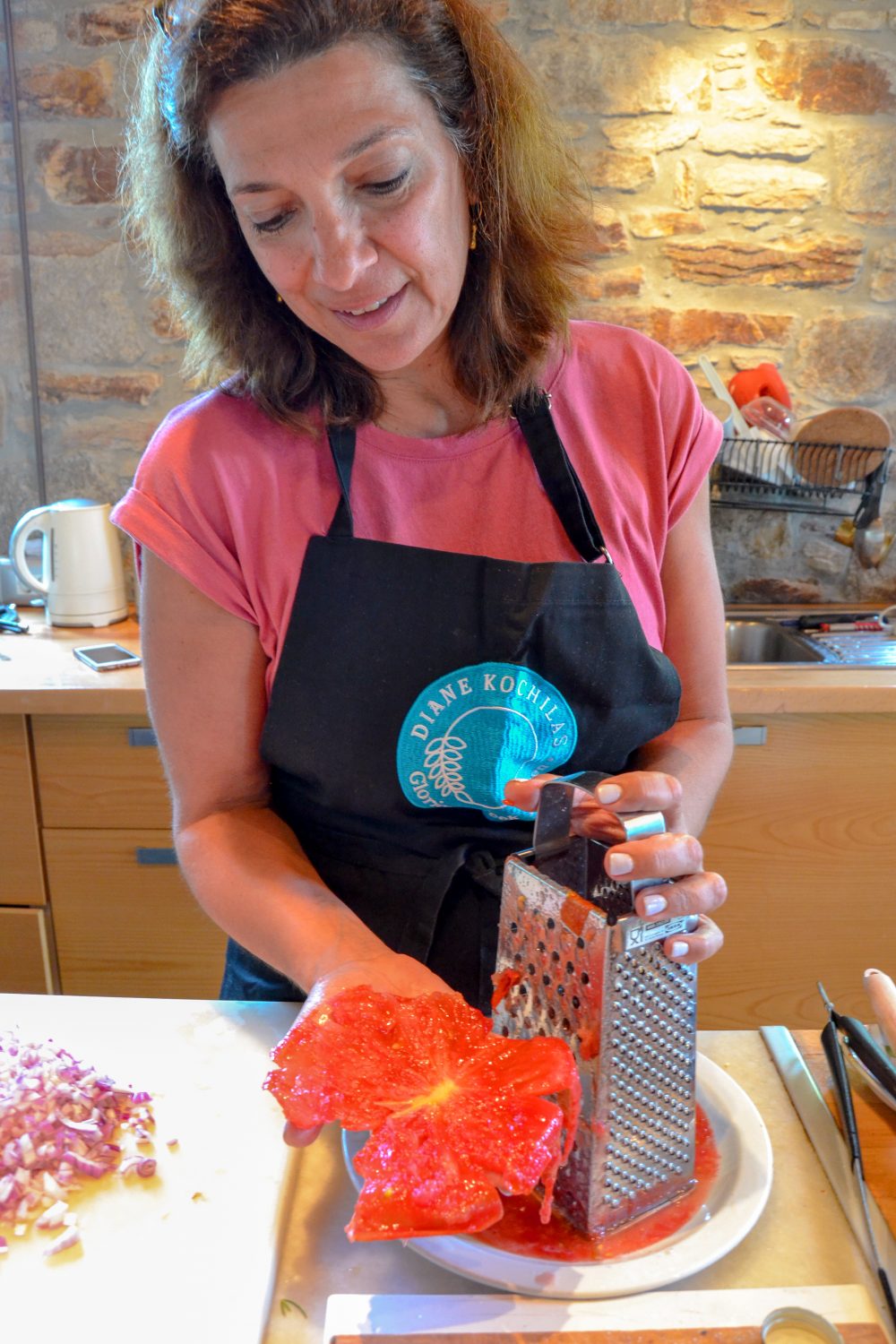
More From Ikaria

